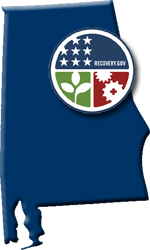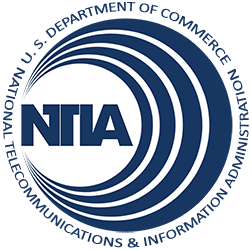To bridge the digital divide and promote engagement in the digital economy across all 67 Alabama counties, the Alabama Department of Economic & Community Affairs is proposing an outreach campaign and interactive training program in partnership with several major community serving organizations. The project has been designed and will be coordinated by the Economic & Community Development Institute at Auburn University. To help foster demand, the project proposes to educate and train residents in the social and economic benefits of broadband technology and practical applications of computers and software. The project plans to employ targeted outreach to economically vulnerable populations in the state including Hispanic, African American, disabled, low income, and senior citizen residents through mobile facilities. Among the anticipated beneficiaries is the Poarch Band of Creek Indians, whose members will receive training, access to new public computer facilities, and other broadband opportunities.
Alabama

| Grantee | Total Award | Type |
|---|---|---|
| Alabama Department of Economic & Community Affairs | $1,181,348 | Sustainable Adoption |
| Alabama Department of Economic and Community Affairs | $4,874,142 | Broadband Data & Development |
| Appalachian Valley Fiber Network | $21,286,914 | Infrastructure |
| Auburn University | $4,636,354 | Public Computer Centers |
| Boat People SOS, Inc. | $461,539 | Public Computer Centers |
| Communication Service for the Deaf, Inc. | $14,988,657 | Sustainable Adoption |
| Deaf Action Center of Louisiana | $1,380,513 | Public Computer Centers |
| JKM Consulting, Inc. | $6,269,197 | Infrastructure |
| One Economy Corporation | $28,519,482 | Sustainable Adoption |
| Trillion Communications, Inc. | $59,258,545 | Infrastructure |
| Troy Cablevision, Inc. | $26,068,284 | Infrastructure |
| University Corporation for Advanced Internet Development | $62,540,162 | Infrastructure |
Project Components
State Capacity Building:
This project will build on the Alabama Department of Economic and Community Affairs’ (ADECA) current activities and enhance Alabama’s capacity to support and sustain regional broadband investment. As a result of this project, ADECA will hire three regional staff and one administrative staff person to manage and coordinate broadband activities across the state. In addition to providing regional leadership, these staff will provide support to the 12 existing regional broadband planning teams in the state as they begin implementing their strategic plans. ADECA, in partnership with a technical expert, such as one of the state research universities, will also design and provide training for the regional teams. This training will provide these teams with both the capacity and resources to continue working toward increased broadband availability and adoption in their communities. ADECA will also expand its broadband research efforts by conducting social and economic impact modeling, particularly in communities with limited broadband availability or low broadband adoption rates.
Data Collection, Integration, and Validation:
This project was originally funded for broadband planning activities and two years of data collection. In September of 2010, this project was amended to extend data collection activities for an additional three years and to identify and implement best practices.
The Appalachian Valley Fiber Network (AVFN) is a public-private partnership designed to bring a middle-mile fiber network to 12 counties across the lower Appalachian Valley in northwestern Georgia and eastern Alabama. Most of the community anchor institutions located in the area report either inadequate access to broadband or a lack of affordable, high-capacity service from existing providers. The project proposes constructing 182 new miles of fiber and leasing 287 miles of dark fiber to complement existing resources held by the two service providers who have collaborated to form AVFN.
Auburn University, in partnership with the Tuskegee Institute and the Alabama Public Library Service (APLS), proposes to expand and enhance public computer centers in 94 rural libraries and 21 public schools in Alabama as part of a strategy to address unmet user demand for computer resources. In a recent study conducted by the University, Alabama libraries reported that more than 60 percent of their patrons were economically vulnerable. This project proposes to improve service for these populations by providing access to broadband-enabled computers that would allow users to search for jobs online, prepare resumes, use career development materials, and apply for employment, training, or related assistance.
Auburn plans to offer over 1,000 online courses for users seeking educational opportunities, along with distance learning and telemedicine applications. Auburn’s Harrison School of Pharmacy plans to test the feasibility of using video conferencing to facilitate transactions between rural residents and pharmacists. Further integrating the schools with their surrounding communities, student interns from Auburn and Tuskegee will work with library staff to maintain the computer centers and equipment.
Boat People SOS’s Neighborhood Empowerment and Support through Teamwork project proposes to provide broadband access, training, education, and support for the underserved Vietnamese immigrant and refugee community that comprises a third of the population of Bayou La Batre and the surrounding areas of Mobile County, Alabama. The project plans to offer broadband access and education through its Community Technology Center and enhance existing access and education at two community anchor institutions: the Bayou Clinic, which is a local health organization, and Alba Middle School.
This project intends to provide skills development opportunities for low-income residents and those with limited English proficiency in communities devastated by Hurricane Katrina and the Gulf of Mexico oil spill, offering a range of training in computer skills,online accounting, and web marketing. Instructors will also offer basic training on computer use and Internet access for those with limited computer literacy with training in English, Vietnamese, Cambodian, Khmer, and Lao.
Broadband’s ability to expand educational and employment opportunities is especially meaningful for Americans who are deaf or hard of hearing, a community that faces unique challenges in education and that suffers from a rate of unemployment much higher than the national average. Communication Service for the Deaf, Inc. (CSD) intends to expand broadband adoption among people who are deaf and hard of hearing and provide them with online tools to more fully participate in the digital economy. The project proposes to employ a combination of discounted broadband service and specialized computers, technology training from an online state-of-the art support center customized to the community’s needs, public access to videophones at anchor institutions from coast to coast, and a nationwide outreach initiative. Thousands will gain online access to all the Internet has to offer, including sign language interpreters, captioned video services, and other content and functionalities designed especially to advance their educational, employment, and healthcare interests.
The AccessAmerica Video Remote Interpreting project plans to install 81 new videoconferencing stations, and enhance the user experience at 19 existing stations that serve individuals who are deaf or hard-of-hearing in Northwest Louisiana, and sites in Alabama, California, and Texas. The project intends to use broadband and videoconference technology to provide on-demand, cost-effective sign language interpretation at a total of 100 community partner sites, including community anchor institutions such as hospitals, courts, public safety agencies, shelters, schools, and libraries. Each state-of-the-art video conferencing unit is expected to connect to trained American Sign Language interpreters working at a central call center or otherwise remotely.
In the rural, economically distressed east-central Alabama region that includes Calhoun, Talladega, Clay, and Randolph Counties, many valuable community organizations rely on slower, copper-based service for their Internet access, and some have no broadband service at all. JKM Consulting’s Project BEAR proposes to deploy a 176-mile fiber network that includes 88 miles of new fiber to provide high-speed, affordable broadband services and directly connect more than 40 community anchor institutions in the four-county region. The project also plans to deploy six wireless access points to facilitate last-mile consumer service in isolated rural areas like Fort McClellan in Anniston, Alabama, and the Talladega National Forest. The project intends to bring fiber to local Public Safety Access Points and other emergency agencies, and strengthen healthcare delivery by connecting rural hospitals such as Clay County and Wedowee Hospital to urban hospitals, enabling telemedicine services such as participation in the Alabama Pediatric Network. The project also expects to enhance local educational opportunities by connecting six community centers, increasing the quality of local after-school and homework programs.
The 21st Century Information and Support Ecosystem project proposes to implement a comprehensive program of computer training, wireless Internet access, broadband awareness marketing, and online content and applications to residents of 159 affordable and public housing developments and low-income communities in 50 cities and towns across 31 states and the District of Columbia. The project plans to implement four principal programs: training 2,500 youth to become “Digital Connectors” who will then provide digital literacy training to others in their communities; deploying localized broadband networks in public housing developments; developing online content and applications aimed at low-income, low-literacy audiences.
Many community-serving organizations in a substantial portion of the rural, eight-county region in central
Alabama targeted by Trillion Communications lack the necessary level of Internet service to thrive and
compete in the digital economy. Trillion has formed a public-private partnership with A2D and the South Central
Alabama Broadband Commission -- a recently formed consortium of local governments, colleges and
universities, medical providers, nonprofit institutions, and the Poarch Creek Tribe -- to bring high-capacity
broadband capabilities to Butler, Conecuh, Crenshaw, Dallas, Escambia, Lowndes, Macon, and Wilcox
Counties.
Troy Cablevision, a competitive local exchange carrier in Alabama, proposes to deploy a fiber-optic network to
provide a critical new broadband route between four southeast Alabama counties—Pike, Crenshaw, Coffee, and
Dale—and key Internet points of presence, or “on-ramps” to the global Internet, in Montgomery and Dothan,
Alabama. Community-serving organizations in all six areas typically lack Internet access at the speeds
necessary to provide key services like Next Generation 911, distance learning, and telemedicine. Troy
Cablevision has also formed a public-private partnership with the South Alabama Electric Cooperative to enable
advanced “smartgrid” energy management services for 17,000 electricity consumers in Crenshaw, Pike, and
Coffee Counties, significantly improving energy efficiency in the region. The network plans to support economic
growth by providing redundant rings, including two backhaul routes to Atlanta, enabling the high-capacity,
reliable broadband capabilities required to attract major businesses to the region.
As part of a longstanding project to connect essential community anchor institutions across the country, and facilitate closer collaboration and long-term benefits for education, research, healthcare, public safety, and government services, the University Corporation for Advanced Internet Development (UCAID) proposes a comprehensive 50-state network benefitting approximately 121,000 community anchors. The project proposes a large-scale, public-private partnership to interconnect more than 30 existing research and education networks, creating a dedicated 100-200 Gbps nationwide fiber backbone with 3.2 terabits per second (TBps) total capacity that would enable advanced networking features such as IPv6 and video multicasting. The project plans to connect community anchors across all disciplines into virtual communities with shared goals and objectives, including colleges, universities, libraries, major veterans and other health care facilities, and public safety entities, with additional benefits to tribes, vulnerable populations, and government entities.
